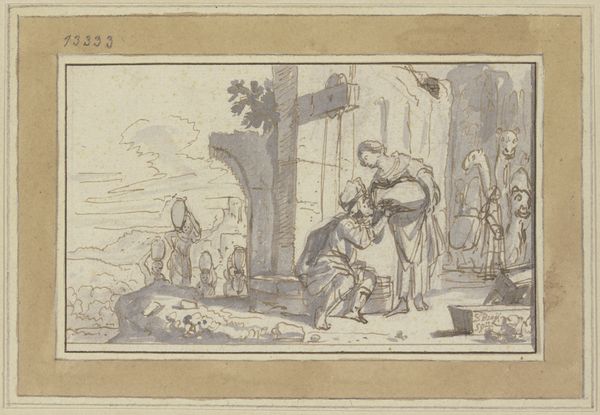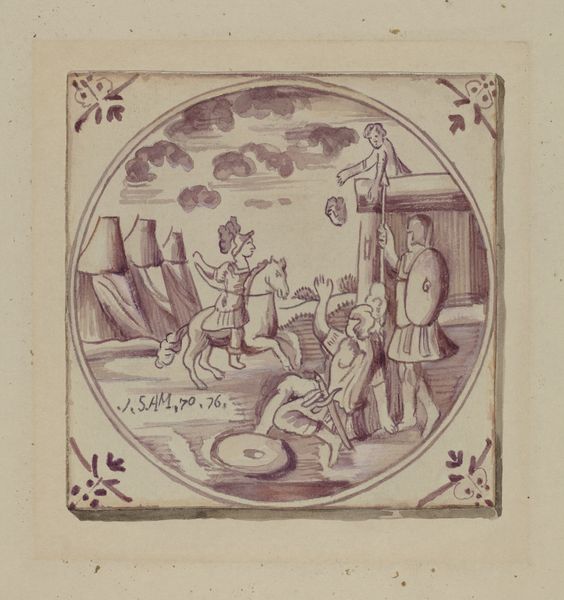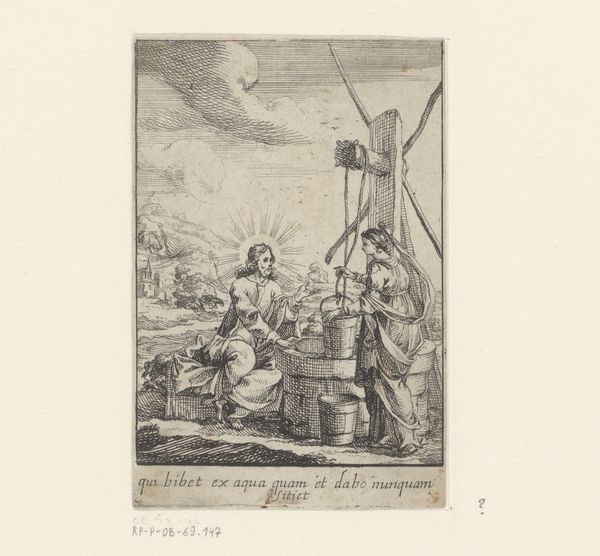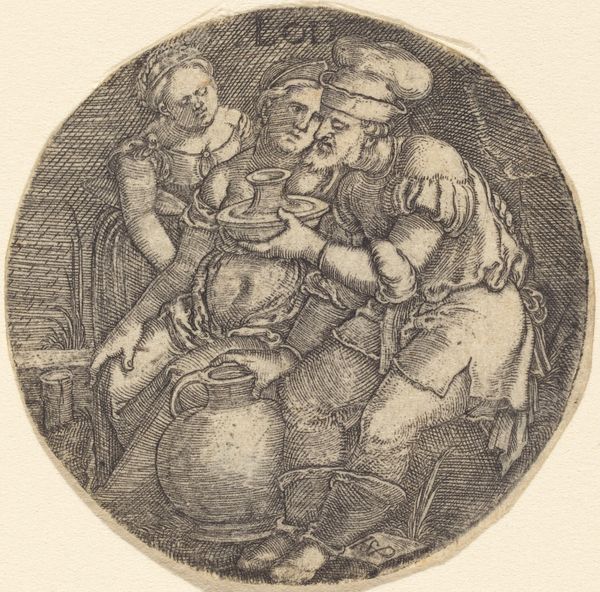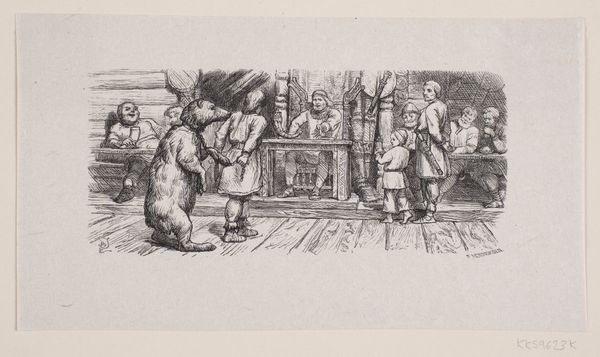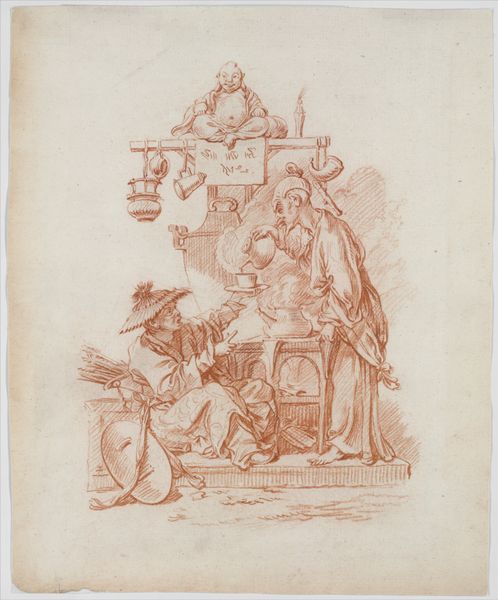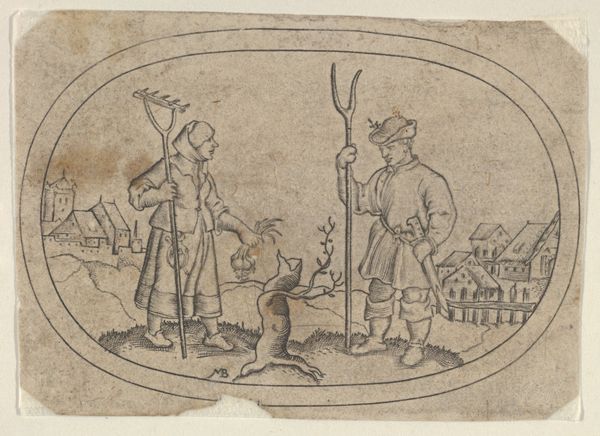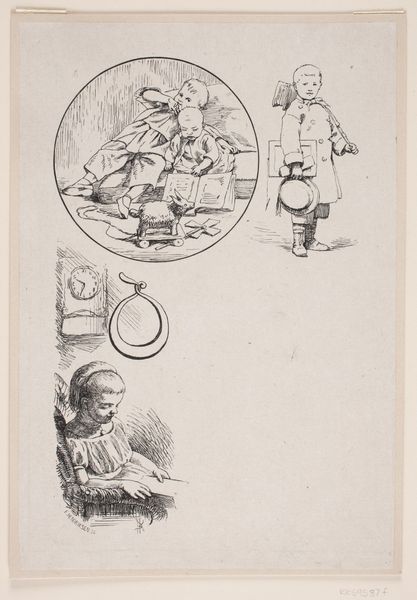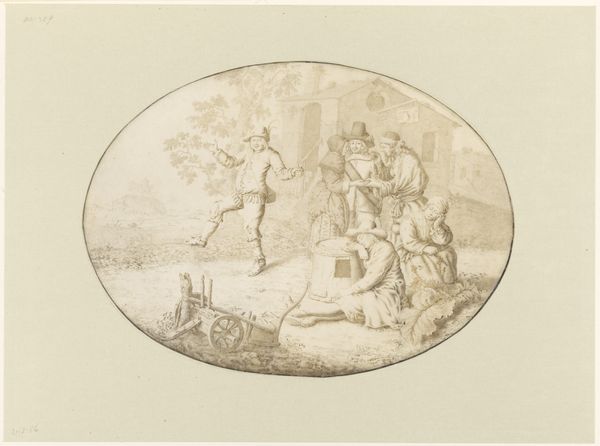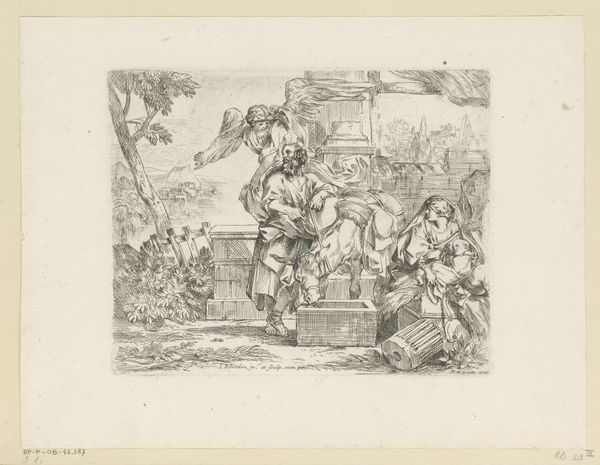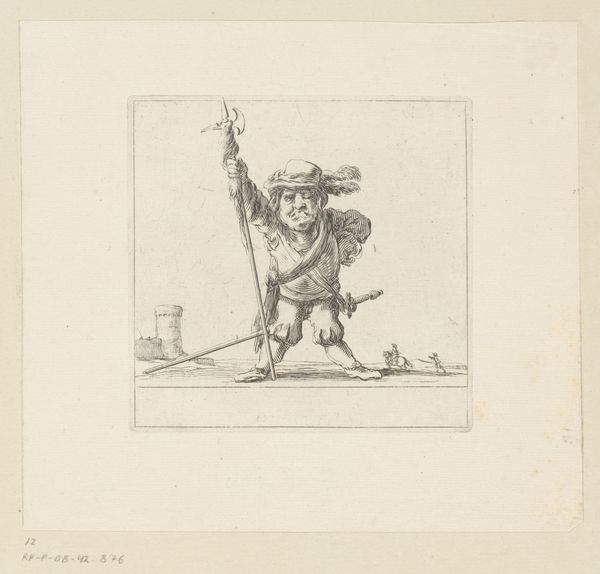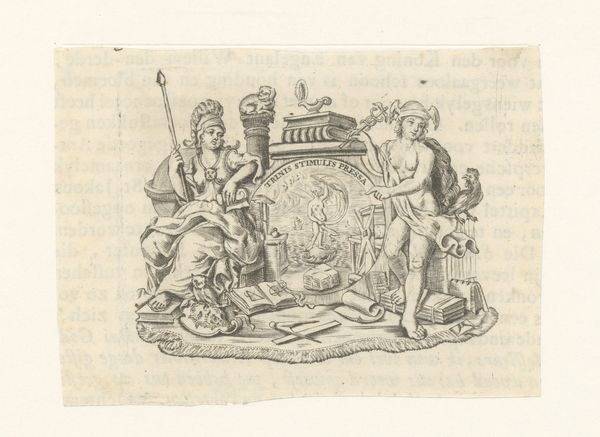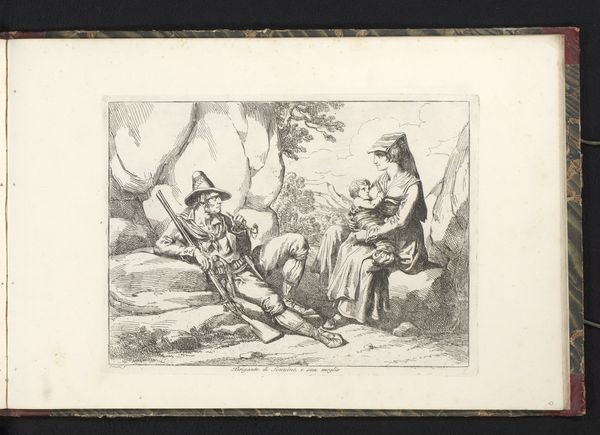
Achilles en Hector in gevecht voor de muren van Troje (in doos met 43 tekeningen) 1741
0:00
0:00
louisfabritiusdubourg
Rijksmuseum
drawing, pencil, pen
#
drawing
#
aged paper
#
paper non-digital material
#
reduced colour palette
#
narrative-art
#
sketch book
#
traditional media
#
classical-realism
#
figuration
#
personal sketchbook
#
journal
#
pencil
#
sketchbook drawing
#
pen
#
history-painting
#
storyboard and sketchbook work
#
academic-art
#
sketchbook art
Dimensions: height 128 mm, width 141 mm
Copyright: Rijks Museum: Open Domain
Curator: Welcome. Here we have a drawing from 1741 by Louis Fabritius Dubourg, titled "Achilles and Hector in Combat Before the Walls of Troy," housed at the Rijksmuseum. Editor: There's an immediate tension in the circular composition, a tightly packed arena ready to explode. The minimal use of pencil and pen focuses your attention on the muscularity of the figures and the crumbling architecture looming behind. Curator: Note how Dubourg used readily available and inexpensive materials: paper, pen, and pencil. The deliberate choice to render such an epic scene with these simple tools reflects the artist's socio-economic context, and the accessibility of classical themes to a wider audience through printed reproductions. Editor: Absolutely. The circular format evokes classical medallions, laden with symbolic weight. Achilles, on the right, lunges forward, a whirlwind of rage and divine power, his trajectory almost meeting Hector’s, framed on the left. They stand as archetypes of heroism and doomed fate, icons re-animated for a later era. Curator: We should not ignore the role of printmaking. This drawing served most likely as a model. It could have been for an engraving. We should analyze paper texture, pencil grade to hypothesize about his precise artistic production. The "originality" dissolves; the artistic process becomes collective labor and the means to achieve a visual goal. Editor: Indeed, and the city itself functions as a potent symbol, its looming walls both protective and, ultimately, insufficient. Consider how the artist depicts the figures watching from the ramparts, caught between hope and despair. It reminds us of the psychological weight that Troy carries in Western culture, as a metaphor for unavoidable tragedy. Curator: Exactly. Consider the material fragility of the drawing versus the imposing theme. It reminds us that even the grandest narratives depend on labor and commerce for circulation and preservation. It shifts our perspective from individual genius to collaborative production. Editor: True. Reflecting on this work, I'm struck by how Dubourg, even with the modest means of pen and paper, managed to distill the essence of the Homeric struggle, ensuring these symbols resonate across centuries. Curator: Agreed. Studying this drawing reveals as much about 18th-century artistic practice as it does about the enduring appeal of classical narratives—an intersection of material production and lasting cultural impact.
Comments
No comments
Be the first to comment and join the conversation on the ultimate creative platform.
